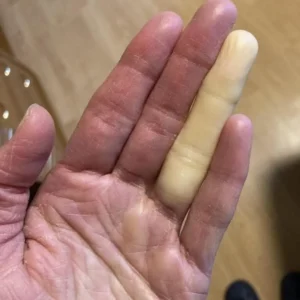History
The guillotine paper cutter, also known as the paper shear, has its roots in the early 19th century. The invention is attributed to French engineer Guillaume Massiquot, who patented the device in 1844. Massiquot’s design, inspired by the earlier guillotine used for beheading, utilized a sharp blade mounted on a lever arm to cut paper with precision and ease. The design quickly gained popularity due to its efficiency and the growing demand for precise paper cutting in offices, print shops, and bookbinding industries.
Usage
The vintage guillotine paper cutter was a staple in offices and printing shops throughout the 19th and 20th centuries. Its primary function was to cut large stacks of paper to a uniform size, essential for producing books, brochures, and other printed materials. The cutter typically featured a wooden or metal base with a built-in ruler for measuring paper, a clamping mechanism to hold the paper stack in place, and a long, levered blade that could be pulled down to slice through the paper.
The guillotine shear was prized for its ability to make clean, straight cuts with minimal effort. The heavy blade and sturdy construction allowed it to cut through multiple sheets of paper at once, significantly improving efficiency in environments where large volumes of paper needed to be processed.
Legacy
The legacy of the vintage guillotine paper cutter is marked by its enduring design and continued influence on modern paper cutting devices. While technology has advanced and many offices now use automated cutting machines, the fundamental principles of the guillotine shear remain relevant. Modern paper cutters still employ a similar levered blade mechanism, albeit with enhancements such as safety guards, ergonomic handles, and precision alignment tools.
Vintage guillotine paper cutters are now considered collectible items, cherished for their historical significance and craftsmanship. Many antique enthusiasts and collectors seek out these devices for their aesthetic appeal and as a symbol of the ingenuity of past generations. In addition, some artists and crafters prefer using vintage cutters for their projects, appreciating the tactile feedback and precision they offer compared to modern alternatives.
The guillotine paper cutter’s impact is also evident in its cultural references. The term “guillotine” has become synonymous with sharp precision and decisive action, often used metaphorically in various contexts. This linguistic legacy underscores the device’s profound influence on both language and industry.





